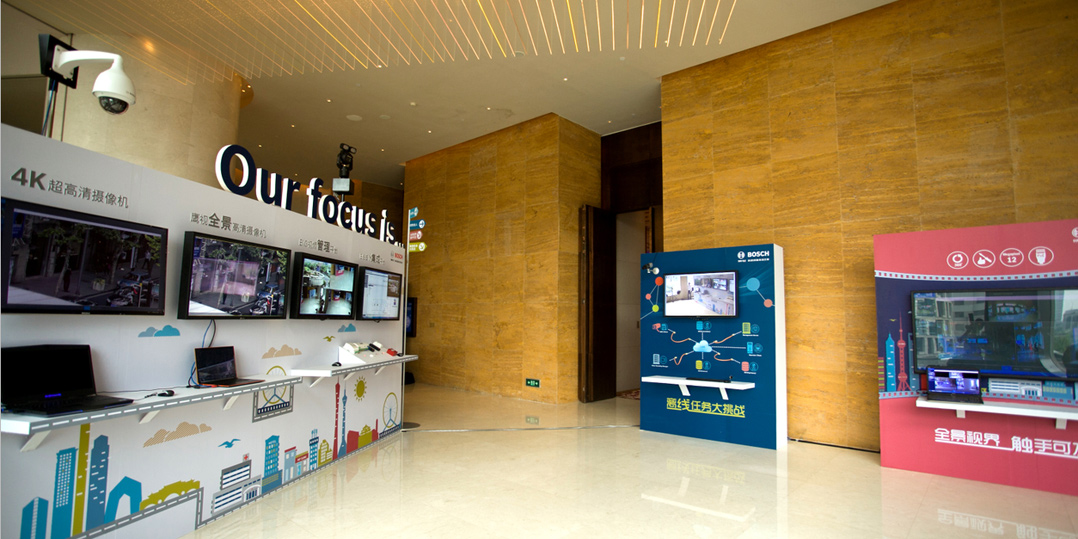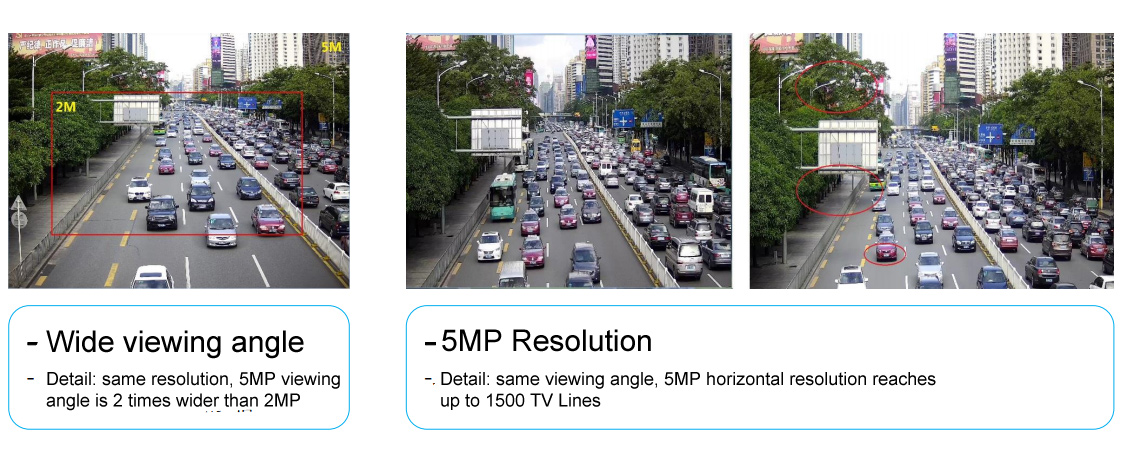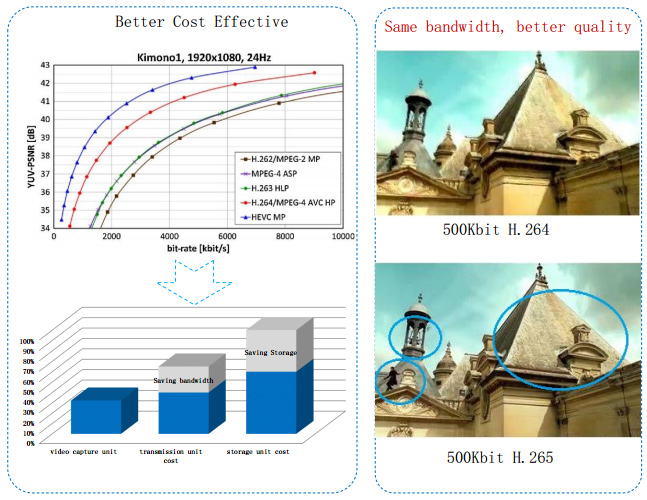
4K UHD security camera and H.265 technology applications
Video surveillance industry has been never stopped pursuing high definition, from standard definition to high definition, and current popular 4K and H.265 technology applications, video surveillance industry is entering ultra high definition era.

Without changing the number of security cameras, focal length, viewing angle, utilizing 4K UHD network camera can better meet the demands of video surveillance. 4K image can provide rich details, even after multiple zoom in, still can obtain high quality details. This allows user to cover large field instead of using several network cameras, such as traffic video surveillance system which includes several cameras to monitor multiple lanes, using one 4K UHD camera can monitor multiple lanes, which in turn, greatly reduce budget and cost. Recent years, many manufacturers begin launching 4K network cameras, including many types such as box camera, fisheye / panoramic camera, even PTZ camera etc.

4K UHD video technology becomes popular. However, 4K technology requires higher compression ratio encoding technology, especially the H.265 technology. H.265 standard basically inherited H.264 architecture, it adopts massive newly developed technologies. In ultra high definition resolution, the new technology makes H.265 compression performance become better than H.264. Now, 2MP, 3MP, 4MP, 5MP H.265 network cameras from well-known manufacturers have been already launched in market. In the past, the H.265 encoder supports up to 5 megapixel resolution, no manufacturers released the 4K UHD H.265 network camera. The good news is, H.265 video compression standard has its own features, it can provide high efficient encoding for 4K ultra high definition video. In this month, the leading semiconductor company - Hisilicon will release its first 4K UHD / H.265 SoC - Hi3519. It can be seen, H.265 is bound to become best video compression standard for next 4K or 8K ultra high definition video encoding. In the next two years, H.265 based 4K products will be widely used in the market, particularly for safe city, medical, financial and other high-end commercial video surveillance applications.
Current bottleneck for 4K network camera
Mr. Tang from Zhejiang Dahua reckon that the market for 4K network cameras are still very small or tiny, poor low illumination performance is the main reason. Since 4K CMOS image sensor has massive pixels, this require camera to collect sufficient light for capturing clear image. However, due to the limitation of sensor size, the increasing of pixels will reduce area of single pixel unit, so that 4K network camera low illumination is not as good as the 1080p network camera. Currently, there is no star-level low illumination 4K CMOS image sensor, this is the bottleneck encountered by all manufacturers. In addition to low illumination performance, 4K resolution increases network bandwidth, storage capacity. Currently, the bitrate of 4K network camera is 10M - 12M. This large bitrate severely slow down the spreading of 4K video surveillance system.
Although there are some barriers to promote ultra high definition, 4K/8K Ultra High Definition inevitably will become mainstream products in the foreseeable future.
We have been always saying that pursuing high definition is endless. Although, since the launch of 4K, it caused some turmoil in industry. From overview of the entire industry, 4K is still in its infancy, to make it become popular and common need some technical support.
4K format resolution includes 3840x2160 and 4096x2160, briefly, 4K is 8 megapixel, approximately equal to 4x 1080P. 4K image, containing more detail, which can meet the different needs of multi-service sector, to achieve resources sharing, and make intelligent video management more efficient, more responsive. About 4K advantage, I believe we don't need to do too much introduction, and currently specialists mainly focus on high storage and bandwidth issues.


Video surveillance evolves from analog to digital, from SD to HD, a long road accompanied with pain and happiness. Video resolution, costs have also increased. In the IP era, 4K ultra high definition makes H.264 video compression come to an end. There is no doubt that H.265 standard greatly accelerate the development of 4K UHD. Taking the mainstream resolution as an example, compared with H.264, H.265 reduced the bitrate at 40%~50% in 1080p resolution, reduced 30%~40% in 720p resolution. This means, 1080p real-time video streaming only requires 1.5~2M bitrate. Meanwhile, with the increasing of image resolution, H.265 video compression efficiency will be improved. After several testing, H.265 can reduce 50%~60% bitrate in 4K resolution when compared with H.264.
Scan me




